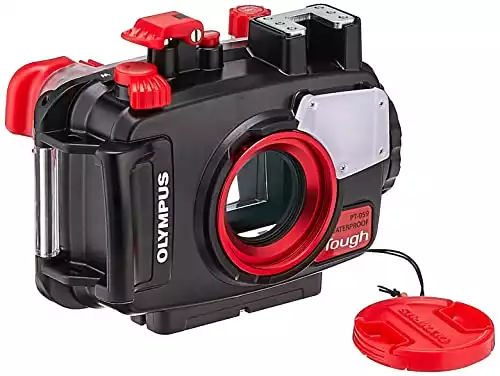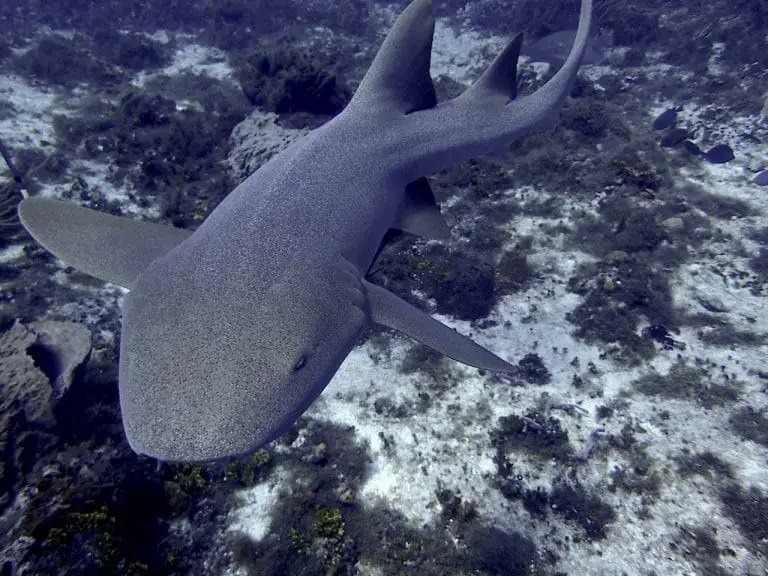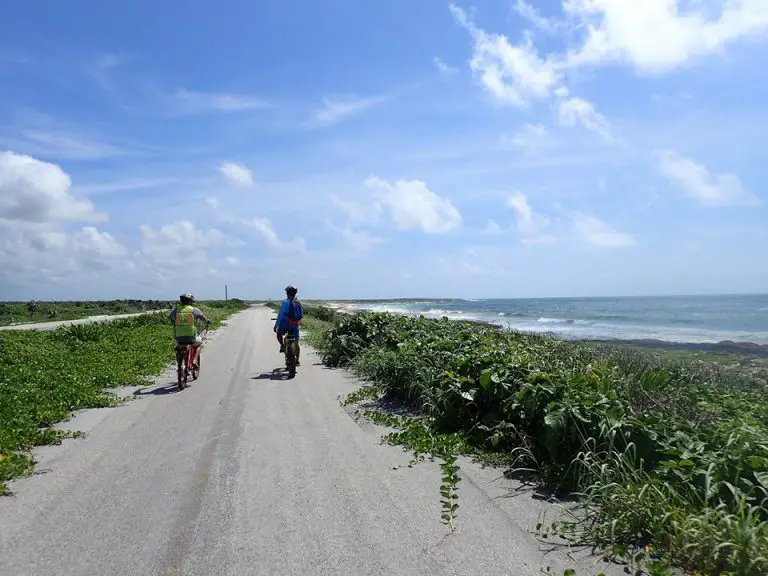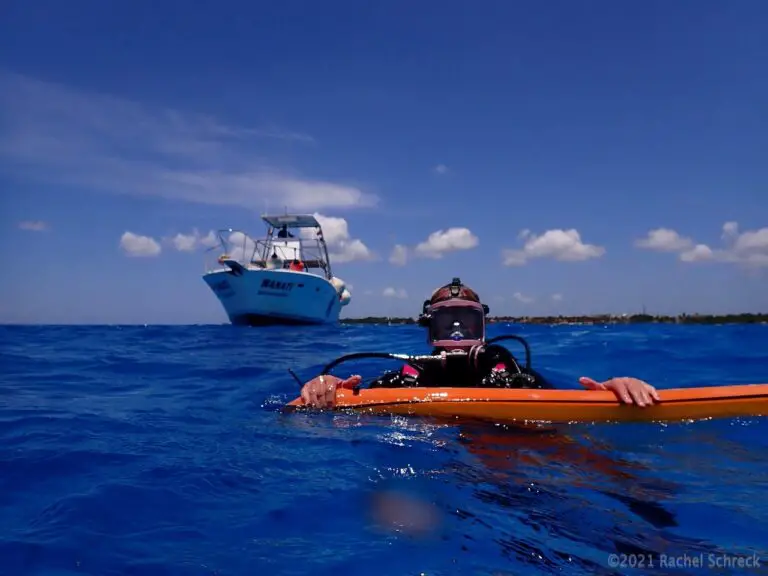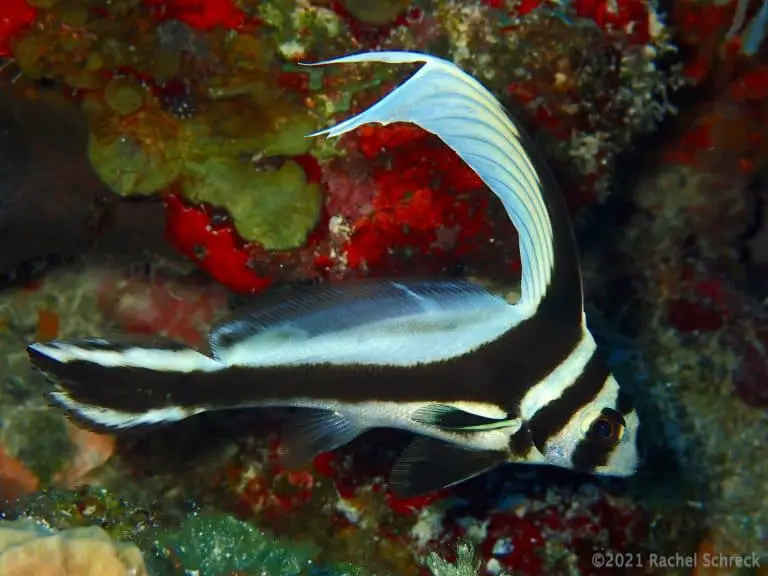Cozumel Marine Life: Spotted Eagle Rays
Among scuba divers in Cozumel, spotted eagle rays pretty much top the list of large, awe-inspiring marine life encounters on the Mesoamerican barrier reef.
Cozumel has a large seasonal population of spotted eagle rays (Aetobatus narinari) that frequently make appearances at all of the island’s popular scuba dive sites. The eagle rays primarily hunt and eat urchins, conch, lobsters, and crabs. Divers in Cozumel often can see eagle rays during the main season of December through March, though they can be seen occasionally throughout the year.
Eagle rays are not aggressive and will typically avoid divers, especially if one with a camera tries to get a little closer.
This is why you see so many underwater dive pictures of their backside.
It’s not just because the eagle rays’ individual spots – which can be used to identify each one, kind of like a fingerprint – are so beautiful.
It’s primarily because when these guys want to get away from you they can motor, leaving even the most zen Cozumel scuba diver in the dust.

Spotted Eagle Ray Season in Cozumel
Spotted eagle rays tend to show up in Cozumel with much greater frequency in early December and hang around until March, each year.
As recently as 2021, though, many were seen on random dives throughout the Spring and Summer months.
So once again, you just never know what every ocean dive will bring. There is always at least a slight chance to see an eagle ray in Cozumel.
Cozumel Eagle Rays Tolerate Divers, But Don’t Spook Them
Spotted eagle rays usually seem as though they’re on a mission – either on their way somewhere or hovering and skimming the ocean floor to detect and catch a meal.
If an eagle ray crosses your path while you’re diving, it may not even seem to notice you. If you stay calm and keep a healthy distance, it will allow one to observe for a while.
Just don’t get greedy and move in too close, make any sudden movements, or otherwise break their focus on the task at hand.
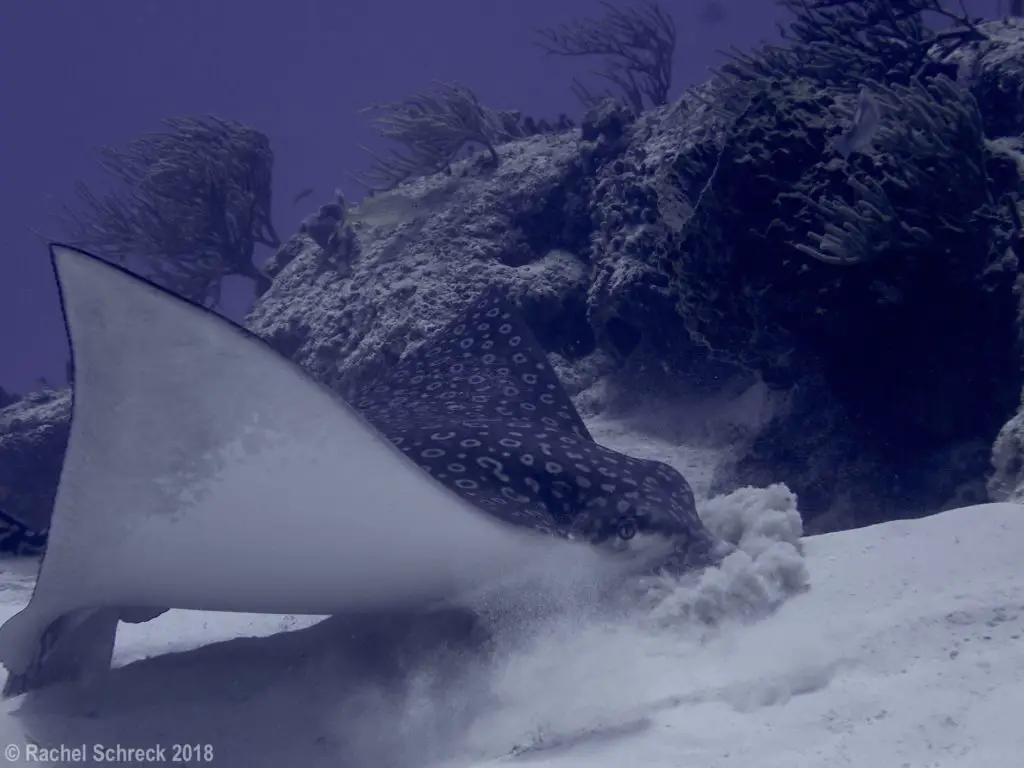
We’ve often had dives where a small group can hover at a very wide distance around a feeding ray, and as long as no one crowds in or stresses the animal, it will go about its business for a nice while.
Usually, though, there eventually comes a moment when the eagle ray senses humans close by or realizes it’s being watched or followed – or is just ready to move along – and then it’ll be outta there, fast.
One quick flick of its wide (up to 3m/10ft) wing-like fins and an eagle ray can move away very quickly.
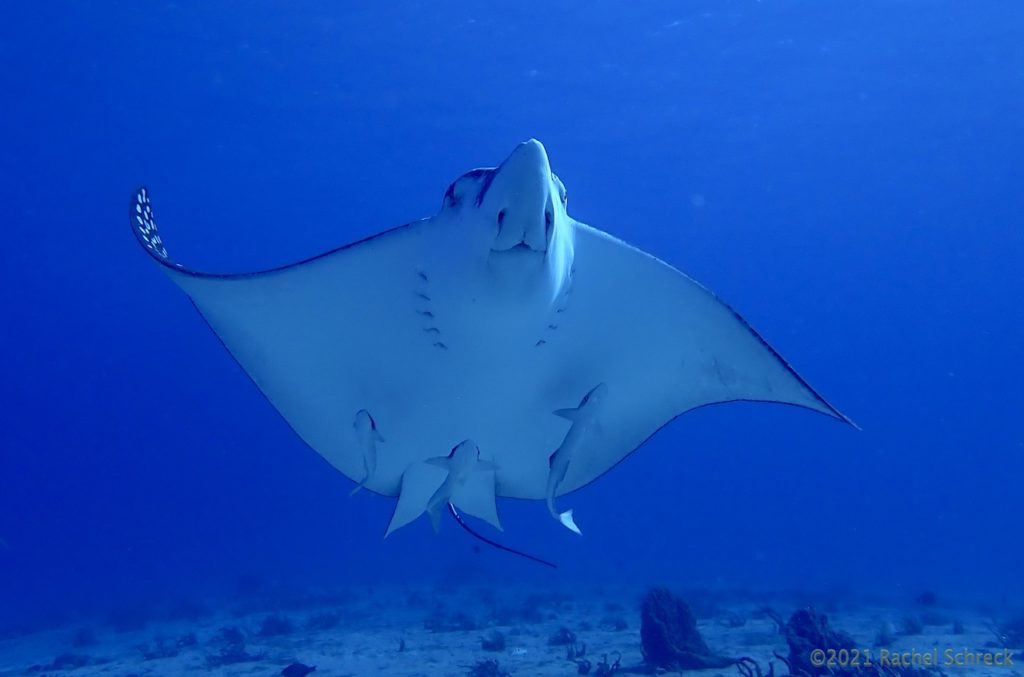
It should go without saying that no one should touch a spotted eagle ray (as if it would even let you), disrupt its feeding cycle, or otherwise harass any marine life while scuba diving in Cozumel (or anywhere), but this is especially true with an eagle ray – for your own safety, as well as the ray’s.
While eagle rays look and act docile, they are equipped with spines near the base of their tail that are venomous.
Eagle Rays Are Found in All Cozumel Dive Sites
I have seen a spotted eagle ray at each and every one of Cozumel’s famed marine park dive sites, including while on simple shore dives done out in front of our favorite dive hotel.
They are also known to congregate in some months at a less-accessible northern dive site called Cantarel, close to the northern boat marina called Puerto Abrigo.
Some locals refer to that spot in Cozumel now as “eagle ray alley” or “eagle ray wall.”
Spotted Eagle Rays Often Travel in Pairs
Very often you’ll catch a glimpse of eagle rays traveling in pairs, or even more than two.
Sometimes, it appears to be a large ray with a small one in tow, so perhaps in those cases the mature one is guiding the young ray,
Spotted eagle rays are said to be fully mature in about 4-6 years into their average 25 year life span.
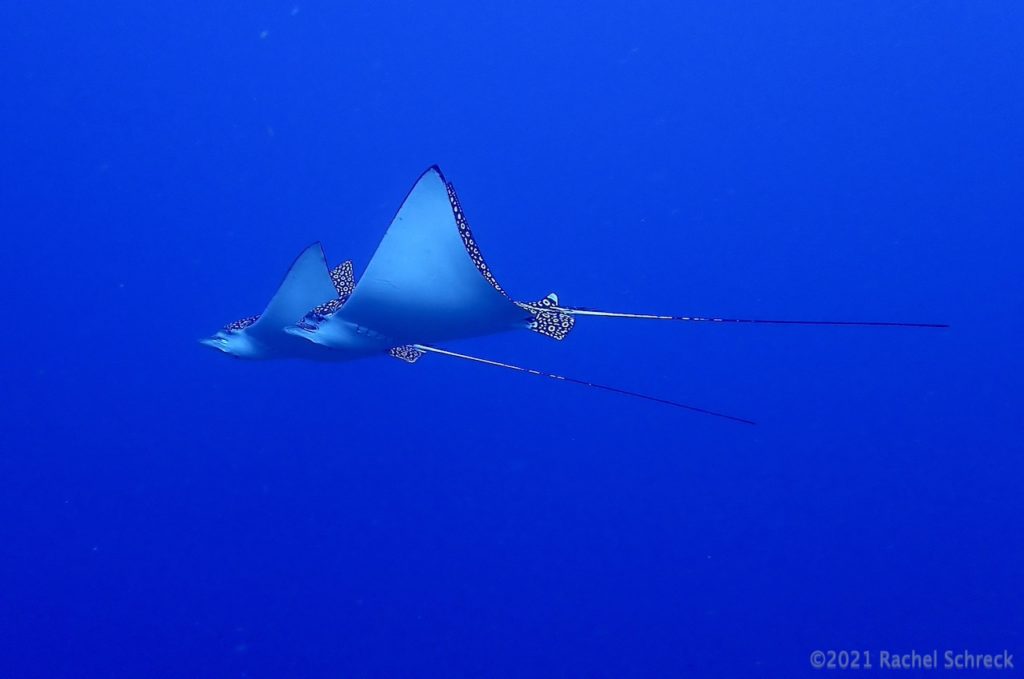
Note: 99.9% of the underwater shots on this site were taken by yours truly with a simple 2 piece set-up from Olympus. Done. For full notes on my easy but quality UW photo gear to get you started, see more at the end of this post.
Where to Look for Cozumel’s Eagle Rays
Cozumel eagle rays are often seen out in the blue waters off of deeper wall dives, but you can also see them very frequently when diving in the shallows and on lots of our favorite second-dive sites.
These large, carnivorous rays swim along, hovering and scanning for prey along the sandy ocean floor, as well as shallow grassy areas.
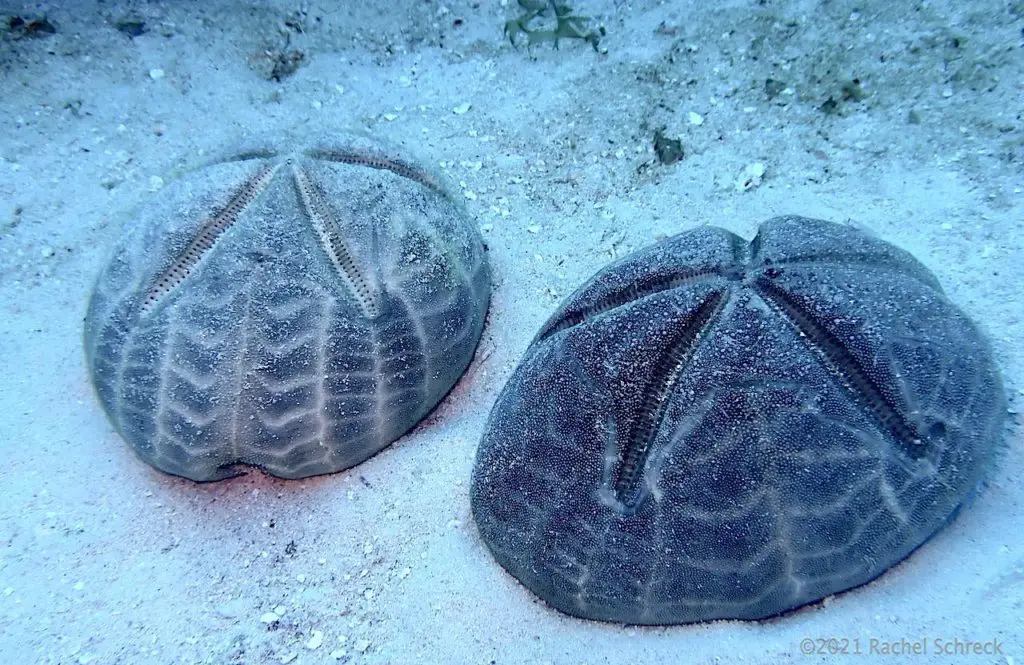
Sometimes you can see clusters of broken shells of large urchins or Caribbean conchs scattered near tell-tale divots in the ocean floor.
This usually indicates a spotted eagle ray was recently there, poking around in the sandy area looking for mollusks and crustaceans.
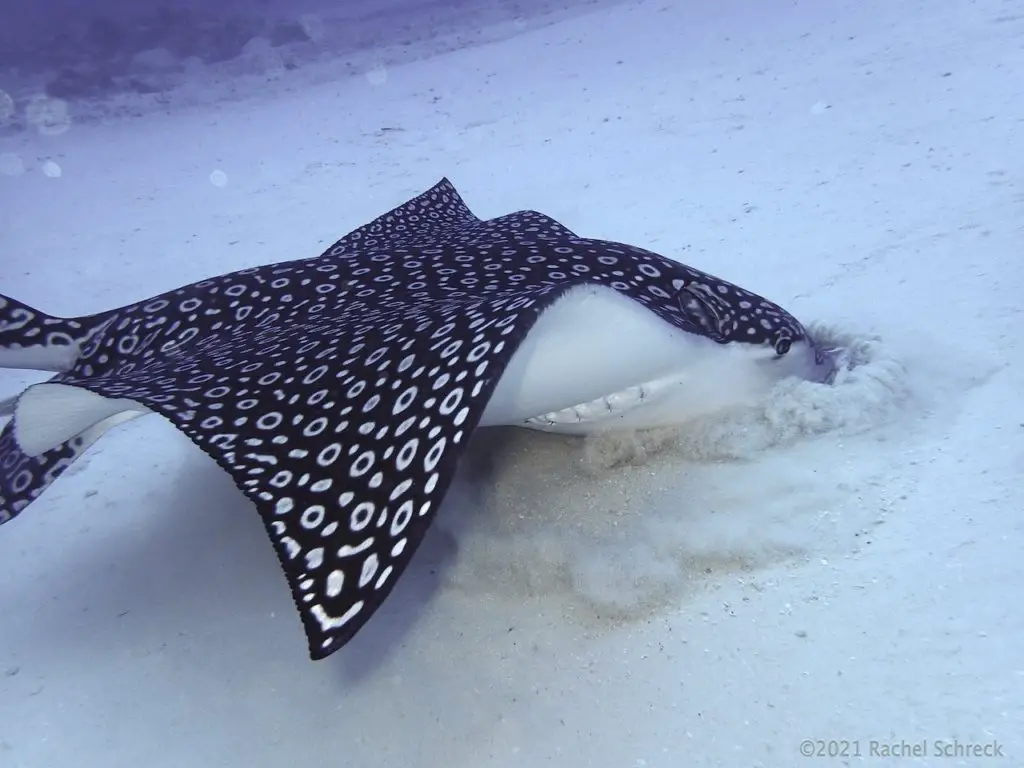
Cozumel’s Eagle Rays are now Endangered
According to the Red List of endangered species by the IUCN, spotted eagle rays are now considered endangered as of 2020.
The threats listed at IUCN indicate a critical decline in mature individuals, yet there do not appear to be any formal conservation strategies in place to mitigate this status.
The biggest threat is over-fishing and getting caught up as by-catch, and – if they’re anything like manta rays – they could also suffer from the tips of their fins being cut off and used as faux-shark fins in the barbaric practice of shark finning for shark-fin soup.
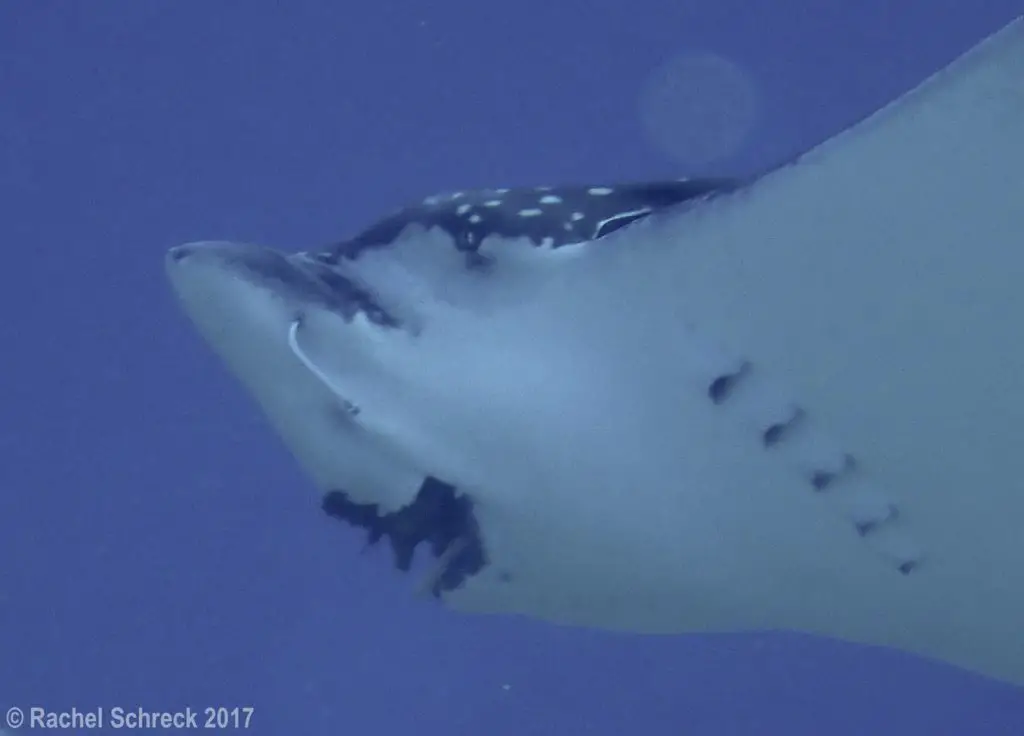
In this area of Mexico, surely rays are hooked and caught with some frequency, but most bycatch incidents are allegedly accidental.
Whatever the complicated blend of reasons, spotted eagle ray species numbers are on the decline, so you should make a plan to come diving in Cozumel, asap.
- Easy to use
- Easy to pack
- Easy on the wallet
- Durable, waterproof, dustproof
-
 $32.48Buy Now
$32.48Buy NowLearn those critters!
We may earn a commission if you make a purchase, at no additional cost to you.
03/09/2024 12:34 am GMT -
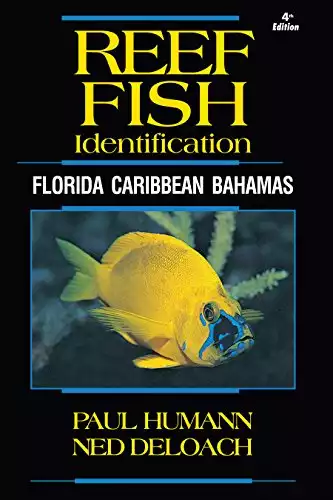 $31.52Buy Now
$31.52Buy NowLearn more about Cozumel's fish - including sharks, rays, and eels
We may earn a commission if you make a purchase, at no additional cost to you.
03/09/2024 02:17 am GMT -
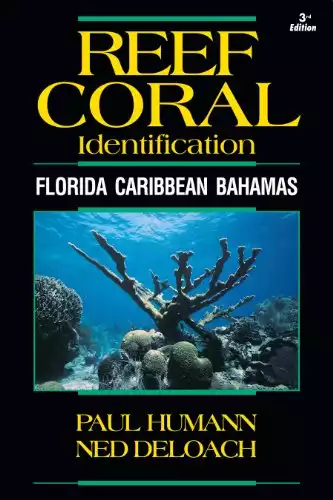 Buy Now$29.26
Buy Now$29.26We may earn a commission if you make a purchase, at no additional cost to you.
03/09/2024 03:04 am GMT


